Forbes Writer Mark Ewing Celebrates the Duesenberg SSJ
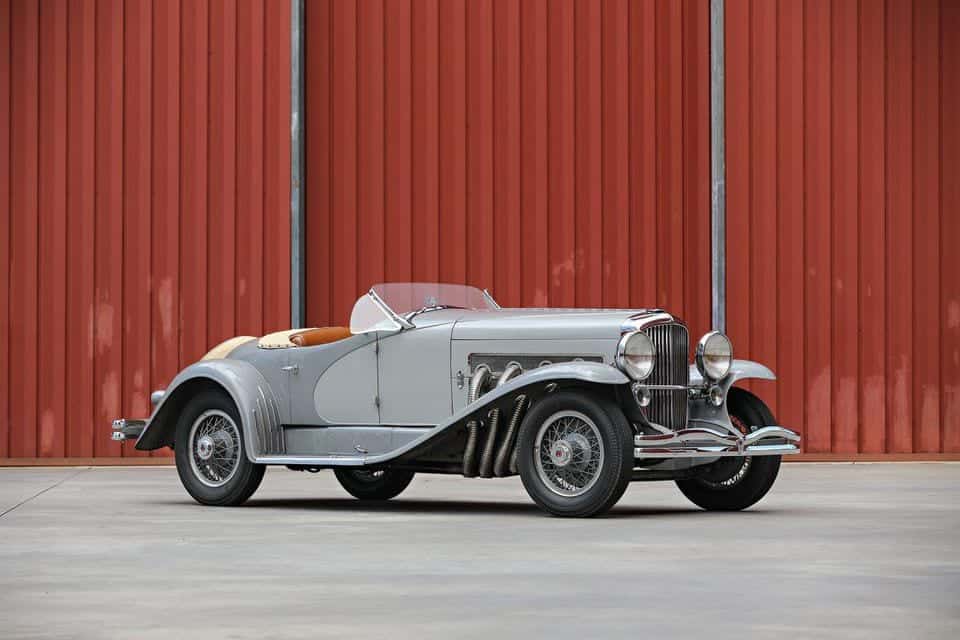
Gary Cooper’s 1935 Duesenberg “SSJ,” chassis number 2594 with engine J-563, is one of the most extraordinary cars of the Classic era, with a 400-horsepower supercharged straight-eight engine placed in an abbreviated Duesenberg chassis with roadster bodywork. It will be offered this coming August at the Gooding & Co. tent just a short walk up the hill from the Pebble Beach Concours.
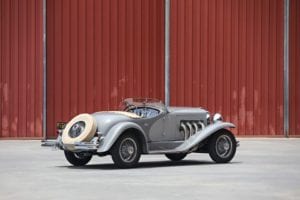
Offered for the first time in nearly 70 years, J-563 should set an auction record for a pre-war American car. J-563 could potentially set an auction record for any American car, eclipsing Carroll Shelby’s first Cobra, which sold in 2016 for $13.75 million during Monterey Car Week. No one ever expected to see J-563 at auction, or sold privately, making it difficult to guess what it might fetch. It is arguably the rarest and most significant road car thus far announced for Monterey this August. European sports cars of the 1950s and ‘60s dominate the market, certainly, but this car is as rare as any sports or sports-racing car, and is in fact powerful and capable enough to enjoy on tours and rallies.
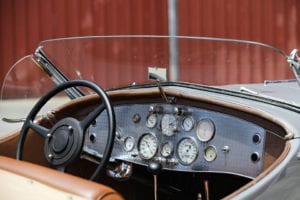
Cooper once said, “When I first came to Hollywood I used to dream, ‘Boy, if I had money I’d have the hell-firedest automobile ever assembled!’ I had one, I had two. I flashed around. In a lot of ways. For a time. Then I got to wondering why I wanted those sensational cars…It gave me a feeling of superiority to pull up beside some other fellow’s car in my deluxe job.”
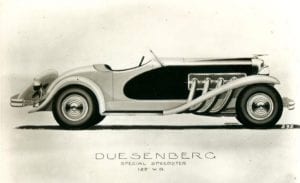
Not only is J-563 an engineering pinnacle car, it also has one of the best backstories ever, with enough chapters to warrant a book. After more than four years under contract playing handsome heroes in silent movies, Gary Cooper hit the big time in 1929 with his first sound picture, “The Virginian.” Cooper rates among those rare actors who successfully transitioned to “talkies.” The following year, Paramount cast him as the lead in several dramas, the most famous being “Morocco,” which co-starred Marlene Dietrich, just one of many Hollywood beauties with whom Cooper had an affair. No matter his wholesome, heroic on-screen characters and shy, polite off-screen demeanor, it’s no stretch to say that Frank James “Gary” Cooper was the most successful swordsman to ever walk down Sunset Boulevard. Cooper remained married throughout to Veronica “Rocky” Balfe, who he married in late 1933 at her mother’s home on Park Avenue, yet it’s clear no woman could resist him, and he reveled in their company.
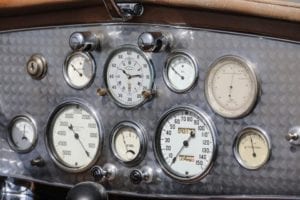
Cooper celebrated in 1930 with his first Duesenberg, a Model J Derham Tourster finished in Primrose Yellow with Parkway Green fenders, which debuted at the Chicago auto show and then starred at the Los Angeles Auto Salon. Paramount Pictures staged several publicity shots of Cooper with his Duesy. In the Great Depression, when captains of industry were well advised to keep a low profile, movie stars were encouraged to publicize their opulent lifestyles to a public in need of distraction.
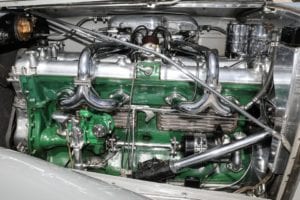
Augie and Fred Duesenberg are of course another chapter in the backstory. The Duesenberg Brothers were creators of incredible racing cars. With Californian Jimmy Murphy at the wheel, a Duesenberg won the 1921 French Grand Prix, stunning and delighting the Europeans. Before 1925, Duesenbergs won the Indy 500 three times, and a Duesenberg-powered Miller piloted by Murphy won as well.
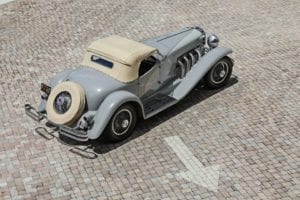
But the Duesenberg brothers failed to create a profitable line of road cars and in 1925 entrepreneur E.L. Cord bought them out, adding Duesenberg to his Auburn and Cord brands, and the many supplier companies he controlled. Economy running strong, Cord tasked the brothers with creation of the world’s finest road car, and three years later they delivered the Model J, which sold for $8500 without bodywork, equal to $121,000. Typically, completed Model Js cost as much as $15,000, equal to just shy of $214,000 today. But production ramped up only a year before the stock market crash of ’29. In the midst of the Roaring ‘20s, Cord had hoped to sell 500 Model Js a year. In the end, he sold fewer than 500 total before shutting down Duesenberg.
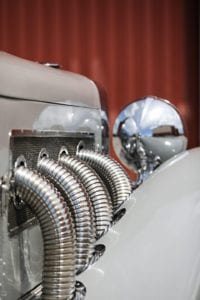
In hopes of reviving sales and moving the last Model J chassis in 1935, E.L. Cord staged an early celebrity-driven marketing program. Duesenberg built the two “SSJ” on spec and loaned them to Cooper and Clark Gable for about six months. At the end of the term, the stars were offered these cars at approximately $5,000, a remarkably good deal.
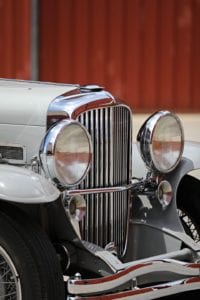
Gable did not buy his SSJ, and Duesenberg sold it to Georgie Stoll, an MGM music director. Cooper bought his SSJ, sweetening the deal by trading in his Derham Tourster against the discounted purchase price.
While it is known that Gable’s SSJ was originally finished in Yukon Gold and Chocolate Brown, the original color scheme of Cooper’s car has been subject of debate, in great part because of an Atlanta Constitution story published on December 15, 1935, that read: “Gary Cooper went home the other night with a new Duesenberg car in a sort of sand color. The next day he brought it back. His wife, Sandra Shaw, didn’t like the shade. So there’s a new paint job being done in a dark, dark green, with silver trimmings.” Note that Sandra Shaw was Veronica Cooper’s stage name. There is a place on the car where the original paint is visible, and it is brown.
The exact duration of Cooper’s ownership of the SSJ remains a mystery. Several early images of J-563 place it in Los Angeles during the late 1930s. During this period both SSJs were photographed at Bob Roberts’ car dealership at the corner of Ivar and Selma, less than two miles from Paramount Pictures.
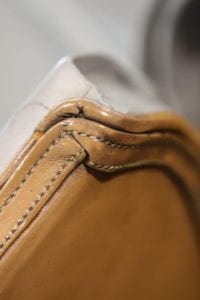
The car passed through the hands of numerous California and Midwest enthusiasts throughout the 1940s, several of whom would constitute full chapters in the car’s backstory if there were but time and column inches—heirs to steel, timber and shipping fortunes, good gentlemen of Stanford, clever mechanics who brokered sales of intriguing cars, powerboat racers, and an industrial designer whose family owned the flower shop featured so prominently in Hitchcock’s “Vertigo.” In late 1948 or ’49, the SSJ was acquired by pioneering collector D. Cameron Peck of Evanston, Illinois. Peck, who already owned the Gable SSJ, J-567, had a buyer in mind: Briggs Swift Cunningham. Peck secured the car and then sold it to Cunningham, who jumped at the chance, paying $3,500 for J-563.
Cunningham was one of America’s greatest sportsmen, revered to this day among all true sports car enthusiasts. His father was a financier who most famously and successfully backed two young men eager to enter the soap business, Cooper Procter and Norris Gamble. Cunningham was a founding member of the Automobile Racing Club of America (ARCA), and the Sports Car Club of America, which thrives to this day. Cars bearing his name contested the Le Mans 24-hour race and the other great endurance races of the 1950s, wearing American colors. Cunningham also successfully defended the America’s Cup in 1958. The importance of Briggs Cunningham to the American sports car world can never be overstated. He and his longtime friends, the Colliers, are in most regards the fountainhead of the American sports car experience.
SSJ J-563 was a fixture in the Cunningham Automotive Museum until December 31, 1986, when he sold his entire collection to Miles Collier, Jr. The longtime family connection made this an obvious transfer of one of America’s greatest-ever car collections. Collier is founder of Revs Institute.
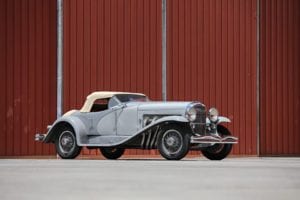
And thus yet another chapter in the car’s backstory. With his wife Parker J Collier, Miles Collier, Jr. is assembling a new team of leaders and thinkers to create Revs 2.0, an idea-driven non-profit initiative to provide the car community with insights and expertise they couldn’t find anywhere else. Alongside Revs 2.0, Parker Collier’s new company, Meaningful Ventures™ will create profitable, self-sustaining enterprises to carry the cultural legacy of the car to future communities. It’s likely that proceeds from the sale of this car will help propel these two initiatives. In certain regards, in rough approximation, consider these two new efforts a 21st Century automotive evolution of Mystic Seaport, which has preserved the legacy of tall ships and our seafaring past, and more importantly has helped preserve and teach the required skills of building and sailing tall ships to succeeding generations. Collier intends to help propel the concept of the personal automobile into the future.
Consistent with Collier’s ethos as a collector, SSJ J-563 has been carefully maintained and preserved, rather than restored. As a result, the Gary Cooper SSJ remains in largely original condition. It possesses marvelous details, like its folding canvas soft top and sections of original leather upholstery; the only notable exceptions to its originality are its various layers of paint and modifications to the rear fenders and bumper, made in California during the late 1930s, when the SSJ was merely a used high-powered roadster.
“Believe me, it is not easy to part with this wonderful car,” says Collier. “It symbolizes so much in our history, and has so much glamour and speed. But my mission is bigger than just one car. In today’s world, the automobile’s continued ability to be meaningful is under threat. Will the personal car be part of people’s lives in the future? Will people understand and remember that the automobile is the most important invention of our age? That it shaped the world as we know it? I want to ensure the legacy of skills, appreciation and care for the importance of motorcars is not lost.”

